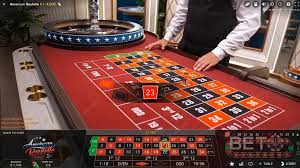Introduction
Slot machines, often referred to simply as “zigzag slot” have become synonymous with the world of gambling. Their vibrant lights, captivating sounds, and the promise of potential riches draw millions of players to casinos around the globe. From their humble beginnings in the late 19th century to the digital innovations of today, slots have evolved significantly, creating a dynamic and exciting form of entertainment. In this article, we will explore the history, mechanics, variations, and the future of slot machines.
A Brief History
The origins of slot machines can be traced back to 1895, when Charles Fey, a San Francisco mechanic, invented the first mechanical slot machine, the Liberty Bell. This machine featured three spinning reels and five symbols: diamonds, spades, hearts, horseshoes, and the iconic Liberty Bell. The simplicity and appeal of Fey’s invention quickly captured the imagination of gamblers.
Over the decades, the design and functionality of slot machines evolved. The introduction of electrical components in the 1960s marked a significant turning point, allowing for more complex gameplay and exciting features like automatic payouts. The late 20th century saw the rise of video slots, which incorporated digital screens and advanced graphics, further enhancing the player experience.
Mechanics of Slot Machines
At their core, slot machines operate on a simple premise: players insert coins or credits, pull a lever (or press a button), and hope to align matching symbols across paylines. The mechanics behind this process involve Random Number Generators (RNGs), which ensure that each spin is independent and fair.
1. Reels and Symbols: Traditional slots have three to five reels, each displaying various symbols. Winning combinations vary depending on the game’s rules, and players can win by lining up symbols across active paylines.
2. Paylines: A payline is a line that determines a winning combination. While classic slots typically feature a single payline, modern video slots can have numerous paylines, often running horizontally, vertically, or diagonally across the reels.
3. Betting Options: Players can usually adjust their bet size, affecting potential payouts. Some machines also offer “max bet” options, which can unlock additional features or jackpots.
4. Bonus Features: Many modern slots include bonus rounds, free spins, and progressive jackpots. These features not only enhance the gaming experience but also provide players with the chance to win substantial prizes.
Variations of Slot Machines
The variety of slot machines available today is staggering, catering to diverse tastes and preferences. Here are some popular types:
1. Classic Slots: These machines typically feature three reels and traditional symbols such as fruits, bars, and sevens. They offer straightforward gameplay and are perfect for purists.
2. Video Slots: With advanced graphics and engaging storylines, video slots have become immensely popular. They often incorporate themes from movies, TV shows, and pop culture, creating a more immersive experience.
3. Progressive Slots: These slots contribute a portion of each bet to a jackpot that grows until someone wins it. The potential for life-changing payouts makes progressive slots particularly enticing.
4. 3D Slots: Utilizing cutting-edge graphics, 3D slots provide a visually stunning experience. Players can enjoy animated characters and intricate storylines that enhance gameplay.
5. Mobile Slots: With the rise of smartphones and tablets, mobile slots have surged in popularity. These games are optimized for touch screens and allow players to spin the reels from anywhere.
The Psychology of Slot Machines
Understanding the psychology behind slot machines helps explain their widespread appeal. The concept of “near misses,” where players come close to winning but fall just short, creates a compelling sense of anticipation. This psychological phenomenon keeps players engaged, often leading them to play for longer periods.
Moreover, the instant gratification associated with slot machines—where wins can occur in a matter of seconds—adds to their allure. The combination of sound effects, visual stimuli, and the possibility of a jackpot creates a euphoric experience that can be hard to resist.
The Future of Slot Machines
As technology continues to advance, the future of slot machines looks promising. Innovations such as virtual reality (VR) and augmented reality (AR) are beginning to reshape the gaming landscape. Players may soon find themselves immersed in 3D environments, interacting with virtual slot machines in ways previously thought impossible.
Additionally, the integration of gamification elements, such as leaderboards and achievements, is expected to enhance player engagement. As casinos increasingly cater to younger audiences, these trends will likely influence the design and functionality of slot machines.
Conclusion
Slot machines are more than just a form of gambling; they are a blend of art, technology, and psychology that continues to captivate millions. From the mechanical Liberty Bell to the immersive experiences of modern video slots, the evolution of this iconic game reflects changing tastes and advancements in technology. As we look to the future, it’s clear that the world of slots will continue to innovate and adapt, promising exciting new adventures for players worldwide. Whether you’re a seasoned player or a curious novice, the spinning reels of slot machines offer a thrilling journey filled with potential rewards.

